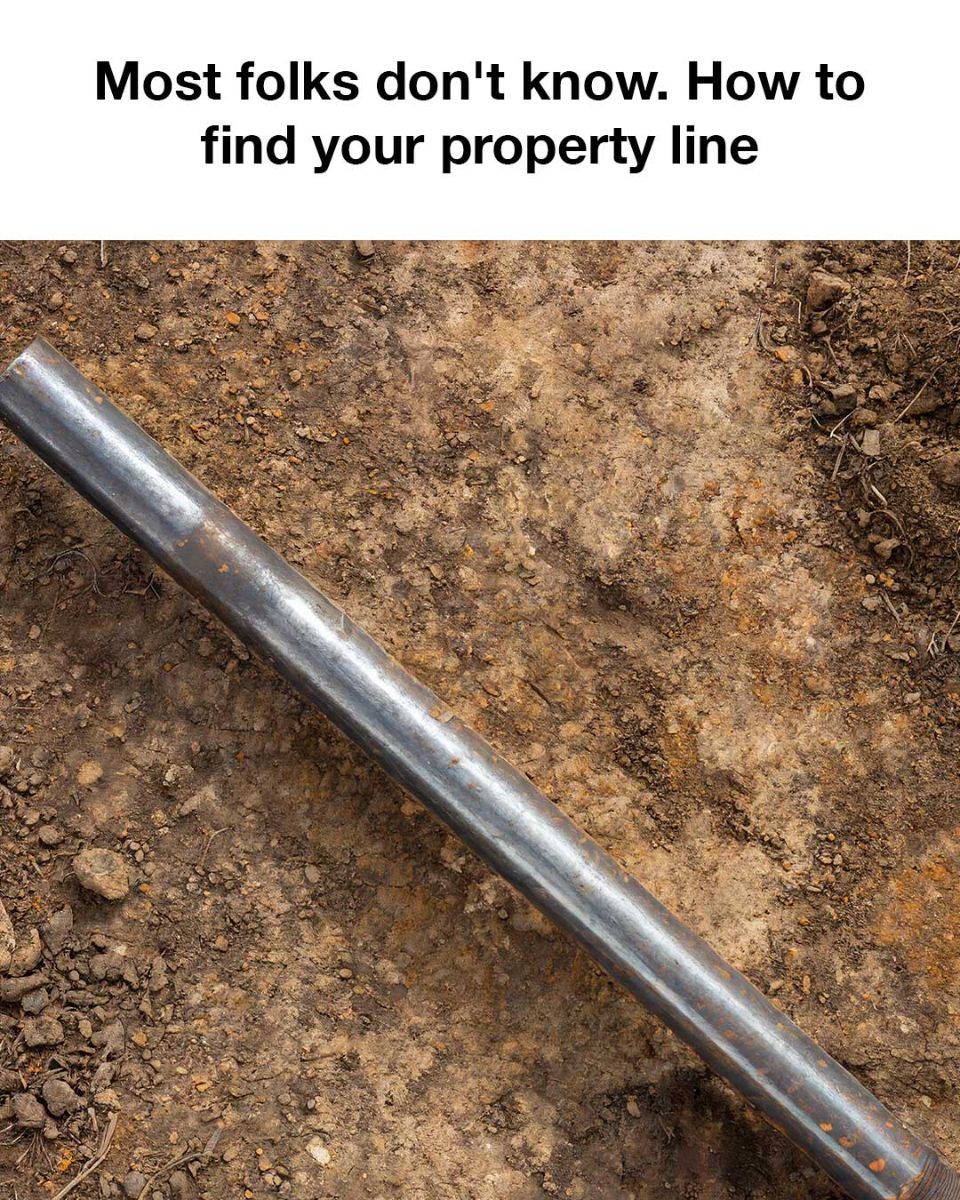When procuring land or a dwelling, discerning the boundaries of your estate is essential. Whether you’re envisioning the placement of a fence, extending your garden, or simply yearning for clarity on where your domain concludes, having precise knowledge of your property lines is indispensable in sidestepping potential disagreements with neighbors. A crucial, yet often disregarded, component in locating these boundaries is the iron stake. Below is a thorough guide to assist in determining your property line and navigating the process adeptly.
The Significance of Knowing Your Property Line
Before we embark on uncovering the whereabouts of your property lines, it’s crucial to grasp their importance. Property lines delineate the legal perimeters of your land, serving vital purposes in a range of circumstances:
ADVERTISEMENT
Home Enhancements: Projects such as erecting a shed, fence, or driveway necessitate a clear understanding of where your property commences and concludes.
Legal Conflicts: Knowing your property lines helps to resolve disputes with neighbors regarding land usage, tree placements, or garden boundaries.
Zoning Regulations: Local ordinances may demand an understanding of property lines to ensure adherence to construction codes and setback mandates.
Property Resale: Clearly defining your property’s boundaries when selling can prevent legal complications and streamline transactions.
Now, let’s delve into the tangible steps of identifying your property line.
ADVERTISEMENT
Step 1: Examine Your Property Deed
Your property deed is a trove of critical information, including a legal description of your land. This description frequently contains measurements of the property’s periphery in feet, along with reference points for locating the corners. While deciphering these descriptions may be complex without professional aid, they provide an elementary framework for comprehending your lot’s size and dimensions.
Look out for terms such as:
Metes and Bounds: Offers detailed descriptions of property boundaries using directional and distance markers.
Lot and Block: Common in subdivisions, this refers to your property’s designated lot number within a plotted area.
The deed may also reference the positioning of iron stakes or pins placed during the initial survey of the property.
Step 2: Secure an Official Property Survey
A property survey is a meticulous map, drafted by a licensed surveyor, outlining the exact dimensions and boundaries of your estate. If you don’t have access to a copy of the survey, your local records office or county clerk may house one. The survey not only highlights property lines but also indicates the locations of buildings, driveways, and iron stakes (also known as “corner monuments” or “property markers”).
This survey is an indispensable resource for tracing your property lines and pinpointing the positions of iron stakes on your land.
Step 3: Unearth Iron Stakes with a Metal Detector
When land is initially surveyed and divided into parcels, surveyors typically place iron stakes at the property’s corners. These metal rods, driven into the earth, act as permanent boundary markers. However, over time, the stakes may become concealed under dirt, grass, or landscaping, making them challenging to locate.
To find these iron stakes, follow these steps:
see next Page

